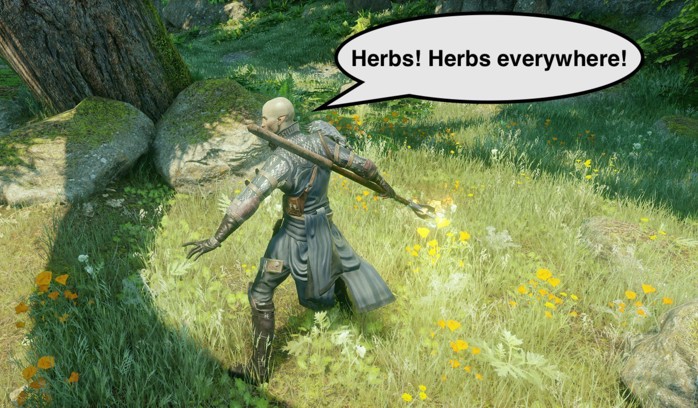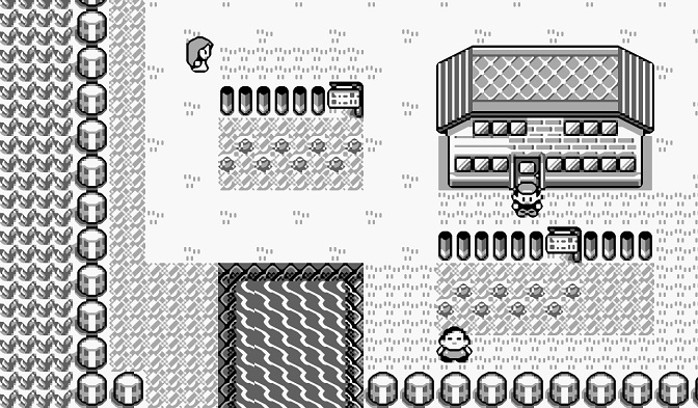Tag Gamedesign
Five game design flaws of Quidditch and how to fix them
A fun case study for the most common game design flaws

I am re-reading Harry Potter for the n-th time. Even it Rowling if trying hard to make me hate it, Harry Potter heptology still have a special place in my hearth. However, there is something I have always hated: Quidditch. It never made sense to me and I always found reading the Quidditch parts very boring. It looks like a game invented by someone who does not know a lot about sports and games.
Reading those parts for the n-th times made me realize that Quidditch may be a good way to showcase common rookie mistakes done by people approaching game-design for the first time (and it also provide meaning for my struggle). So, that’s what we will do today!
Game Design: Gathering Quests Sucks
Why we keep punishing players with horrible chores?

Some years ago I was playing one of those big AAA games, an epic RPG saga, a staple of single player games. While I was leading my army against the forces of evil, in one of the first outposts I meet a guy with a quest. What an epic quest it will ever be? What dangerous task requires the intervention of an epic hero?
“Collect 10 herbs.”
Game Design: Taxonomy of Fishing Mini-games

Fishing is probably the most common mini-game in gaming history. Before I started working on this article, I never realized how many games include a fishing as mini-game. The list is huge. Fishing is everywhere. It seems that it is not possible to have a game without the possibility for character to have a relaxing time fishing in a pond.
Everybody loves fishing! At least in games. We can imagine a deep reason for that. There must be something that attract designers, gamers and human in general to the ancient art of fishing. However, for the time being, we are not interested in this question. Instead, we want to explore the huge design space of “fishing games”.
In fact, the action of fishing has been dissected for decades by game designer. It is fascinating to see how many implementations exist for the same real-life action. So, it is time to see what they produced, what are the possibilities and how we can do something new in this domain.
Cuphead is not "hard"

During the last few weeks, I’ve seen over and over people saying that Cuphead is hard. That it is brutal. That is the “dark souls of the side shooter”. For this reason, before this trend goes too far, it is time to make things clear: Cuphead is not hard.
Can a game that can easily beaten in a couple of hours be hard? No. It is challenging", yes. It requires multiple tries, for sure. But it is not hard and definitely not “brutal”. There are several reasons why Cuphead can be considered a very forgiving game.
On Designing Games for Infinite Players

When you design a game, one of the most important aspect to take into account is the number of players. Games can be designed for a single player, two players, four players or thousands of player (like in MMOs) and this decision has a huge impact in the technical and design requirements.
But it is not just choosing a number. The “number of players” parameter cannot be arbitrarily moved at will. The more we increase the value, the more the designing task becomes harder and harder. Look around you. We have thousands of single-player games, we can find a huge amount of games for 2 to 4 players, we have party games that can go to 10 players or team sport games such as rugby and football that can be played up to 20 or 30 players, but after this amount of players, how many good games there are?
Turn-based Battle Systems - Chapter 2 - Analytical Analysis

Hello everybody! It is time to continue with our series on Pokemon-like battle systems. In this chapter I will be more general: now we have our beautiful damage formula and a draft of our characters sheet, it is time to quickly check if the game the formula is balanced. There are a lot of questions that we want to answer as quick as possible. How much HP the enemy must have? What is a good value for the attack power? Is the damage formula fair enough? The critical strike is too much? The randomness is too much? Is it fun?
Except for the last question, we can try to answer them just looking at the damage formula. Obviously we can not answer all the questions now, but if there is some evident mistake, we will be able to catch it as soon as possible. There are several ways to analyse the tuning and balancing problem for a damage formula (and thus for a large part of the combat system): analytically, with Google Sheet/Excel, and with a quick software prototype.
In this article we will start from the first step: the analytical analysis.
The Challenge of Infinite Space

A.K.A. why Elite: Dangerous, Star Citizen and No Man’s Sky could be doomed to fail
Since the beginning of the videogame era, developers aim to reach a perfect simulation of the world. “So realistic!” is probably one of the most abused comment to a videogame ever. The videogame industry tried to reach realistic graphic, realistic sounds, realistic landscapes and realistic Non-Player Characters. However, reaching the perfect realism is a never-ending quest. As soon as we reach something, desire drives us to seek more.
Now that we have extraordinary graphic capabilities and stunning landscapes, some developers are going to raise the bar to a much bigger task: simulating the universe (or at least, the galaxy). We are not in the first (game) generation who is trying to achieve that (the original Elite is a very old game indeed), but we are for sure in the first generation who can reach this goal; at least to some extent.
We have the technical capabilities for doing amazing things: we can generate and simulate hundreds of billions of star systems, we can allow the player to travel to every one of them, explore and land on every square unit of the planet surface, every asteroid, every satellite. Software/games such Space Engine can clearly show us what a lonely developer can do in its spare time. Imagine what a game developers team can do on their full time job! It is not a surprise that several studios spotted the niche in the market and tried to use this power for a real game. After all, it is not “simulation of experience” one of the meaning of “game”?
How to design a Pokémon-like Combat System

The Combat System is one of the main gameplay element in a game. Of course there are a lot of games without “combat”: puzzles, simulation games, driving games and so on. However (and you know this in the depths of your soul) that your game must have an amazing combat system because we LOVE beating the crap out of our enemies! Other games mechanics are good, but a good fight can be AMAZING.
There are several ways to implement a combat system but, at the end of the day, we can divide the heterogeneous world of combat systems into two big clusters: real time combat systems and turn-based combat systems. The first are exciting but they rapidly becomes hard to implement. We will need to do a lot of animations, tuning collision boxes and tons of graphical stuff. If you are a poor programmer like me, you cannot do that (sad face :<).
With turn-based combat system, instead, you can do the most complex things you can image! You can take into account hundreds of variables and statistics, create complex strategic combinations, evocations, magic, everything. You can use dice, cards, tokens, everything in order to emulate an epic combat between a dragon and drunk dwarf with a wooden leg. Because turn based combat systems are an explicit abstraction of a real combat, the player can absorb without complaining a bigger level abstraction. The same cannot be said for a real-time combat system in which just an ugly animation can be labeled as “ugly designed and sluggish combat” and provide frustration to the player.
So we are going to implement a turn-based combat system! But how? Well, this obviously depends on which type of turn-based combat system you want to do. For now, we will try to do a replica of the first turn-based game I’ve ever played: the Pokemon Combat System!
This is a nice combat system to replicate as a tutorial because is not too complex (especially in Gen. 1 or 2), but contains several tricky points that we need to handle! We will explore the design and the implementation of this combat system in details. We will see how to design the combat system, how to do a first balancing and test on paper, and every implementation step! So let’s start!
